Since last January, the blanket use of antibiotics at drying off was banned. Up to now, the blanket use of antibiotic dry cow tubes at drying off was justified on the basis of the antibiotics curing existing infection in the udder and preventing new infections that may be picked up during the dry period.
Now, antibiotic dry cow tubes can only be prescribed by a vet on a cow by cow basis. The Department of Agriculture has recently published some questions and answers for farmers on the new rules;
Q. Does the new veterinary medicines legislation allow my veterinary practitioner to prescribe antibiotics at drying off?
A. Yes. Your veterinary practitioner must use a selective approach to dry cow therapy in order to prescribe antibiotics at drying off. Your vet cannot use a blanket approach to dry cow therapy to prescribe antibiotics for your cows at drying off.
What is the difference between a blanket and selective approach to dry cow therapy?
Selective dry-cow strategy involves administering internal teat sealant only to a selected proportion of suitable cows at drying off, with the remainder of the cows receiving both an antibiotic tube and an internal teat sealant.
Blanket dry cow therapy is systematic, with every quarter of each cow receiving an antibiotic tube, based on a herd level assessment only. Therefore, some antibiotic treatments may be given to animals that do not need them.
A selective dry-cow strategy is not without risk, hence the importance of engaging with your veterinary practitioner when making farm-level decisions.
Will my veterinary practitioner need to prescribe dry cow antibiotics for my herd?
Your veterinary practitioner needs to assess the risk of infection to the individual cows in your herd to prescribe dry cow therapy. Your vet may need to examine individual cows and maybe individual quarters.
It’s important that you provide your vet with records of all mastitis events, treatments administered and related outcomes, along with any and all milk quality data, including somatic cell counts, microbiological testing and antibiotic susceptibility testing.
Data
The best form of data for deciding on whether or not a cow needs to be treated with antibiotics is milk recording records. With only half of all herds being milk recorded nationally, this poses a big challenge for vets to have good data when it comes to making decisions on which cows get what treatment.
The recommendation is for milk recording to be carried out every four to six weeks and for there to be at least six recordings during the year.
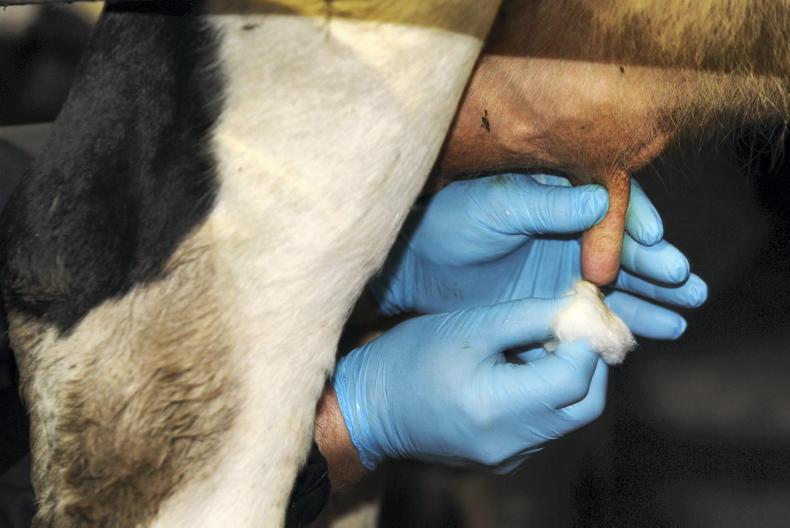
Hygiene is critical at drying off.
However, according to Animal Health Ireland (AHI), new research has shown that just one recording, taken within four to six weeks of drying off, can provide useful information about infection status at drying off.
Therefore, farms that are not currently milk recording should consider carrying out a milk recording prior to drying off cows.
Manually taking a sample of milk for SCC testing is not a reliable method, because it may not provide a representative sample of milk from each quarter, so ensuring that all samples are collected through milk meters is important.
Using a Californian Milk Test (CMT) with a paddle and solution is possible where no milk recording data is present, but the rules state that the CMT should be carried out by the prescribing vet, which may not always be feasible.
The AHI fact sheet for vets also says that a CMT test result is subjective and could be negative at up to 500,000 of an SCC.
On farms where the risk of new infection in the dry period is very high, a blanket approach to dry cow therapy may be justified where the vet thinks there is a risk to animal welfare.
However, the guidelines state that these risk factors need to be addressed before the next dry period.
New rules on blanket dry cow therapy came into force last January and all herds being dried off this season will need to use selective dry cow therapy. Six milk recordings per year is recommended, but studies have shown that just one milk recording within four to six weeks of drying off gives good information. A CMT test can be carried out by the vet on every cow prior to drying off, but this may not be very feasible and the results can be more subjective compared to milk recording.
Since last January, the blanket use of antibiotics at drying off was banned. Up to now, the blanket use of antibiotic dry cow tubes at drying off was justified on the basis of the antibiotics curing existing infection in the udder and preventing new infections that may be picked up during the dry period.
Now, antibiotic dry cow tubes can only be prescribed by a vet on a cow by cow basis. The Department of Agriculture has recently published some questions and answers for farmers on the new rules;
Q. Does the new veterinary medicines legislation allow my veterinary practitioner to prescribe antibiotics at drying off?
A. Yes. Your veterinary practitioner must use a selective approach to dry cow therapy in order to prescribe antibiotics at drying off. Your vet cannot use a blanket approach to dry cow therapy to prescribe antibiotics for your cows at drying off.
What is the difference between a blanket and selective approach to dry cow therapy?
Selective dry-cow strategy involves administering internal teat sealant only to a selected proportion of suitable cows at drying off, with the remainder of the cows receiving both an antibiotic tube and an internal teat sealant.
Blanket dry cow therapy is systematic, with every quarter of each cow receiving an antibiotic tube, based on a herd level assessment only. Therefore, some antibiotic treatments may be given to animals that do not need them.
A selective dry-cow strategy is not without risk, hence the importance of engaging with your veterinary practitioner when making farm-level decisions.
Will my veterinary practitioner need to prescribe dry cow antibiotics for my herd?
Your veterinary practitioner needs to assess the risk of infection to the individual cows in your herd to prescribe dry cow therapy. Your vet may need to examine individual cows and maybe individual quarters.
It’s important that you provide your vet with records of all mastitis events, treatments administered and related outcomes, along with any and all milk quality data, including somatic cell counts, microbiological testing and antibiotic susceptibility testing.
Data
The best form of data for deciding on whether or not a cow needs to be treated with antibiotics is milk recording records. With only half of all herds being milk recorded nationally, this poses a big challenge for vets to have good data when it comes to making decisions on which cows get what treatment.
The recommendation is for milk recording to be carried out every four to six weeks and for there to be at least six recordings during the year.

Hygiene is critical at drying off.
However, according to Animal Health Ireland (AHI), new research has shown that just one recording, taken within four to six weeks of drying off, can provide useful information about infection status at drying off.
Therefore, farms that are not currently milk recording should consider carrying out a milk recording prior to drying off cows.
Manually taking a sample of milk for SCC testing is not a reliable method, because it may not provide a representative sample of milk from each quarter, so ensuring that all samples are collected through milk meters is important.
Using a Californian Milk Test (CMT) with a paddle and solution is possible where no milk recording data is present, but the rules state that the CMT should be carried out by the prescribing vet, which may not always be feasible.
The AHI fact sheet for vets also says that a CMT test result is subjective and could be negative at up to 500,000 of an SCC.
On farms where the risk of new infection in the dry period is very high, a blanket approach to dry cow therapy may be justified where the vet thinks there is a risk to animal welfare.
However, the guidelines state that these risk factors need to be addressed before the next dry period.
New rules on blanket dry cow therapy came into force last January and all herds being dried off this season will need to use selective dry cow therapy. Six milk recordings per year is recommended, but studies have shown that just one milk recording within four to six weeks of drying off gives good information. A CMT test can be carried out by the vet on every cow prior to drying off, but this may not be very feasible and the results can be more subjective compared to milk recording. 





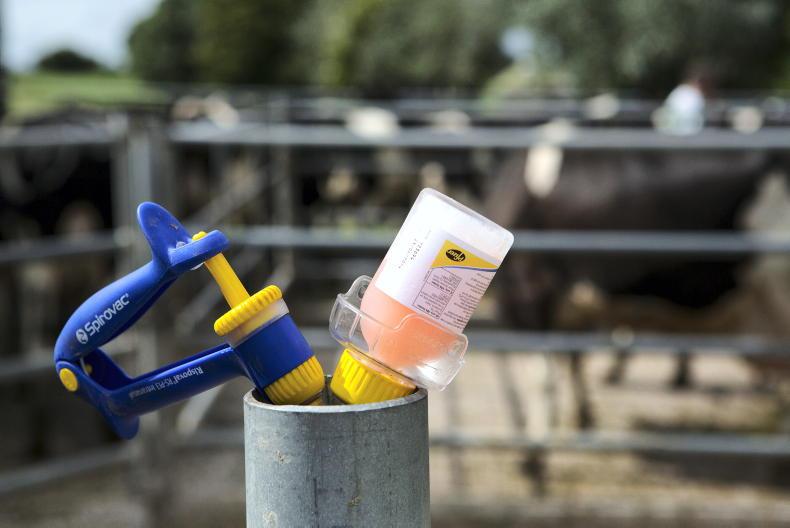
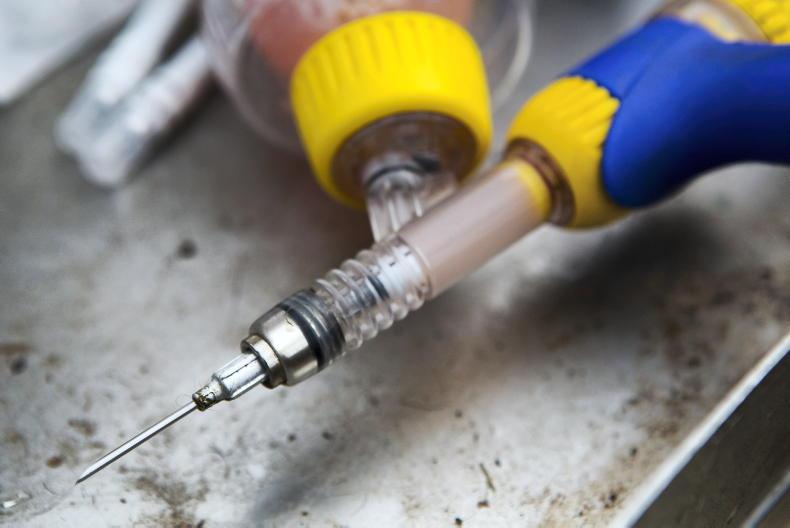
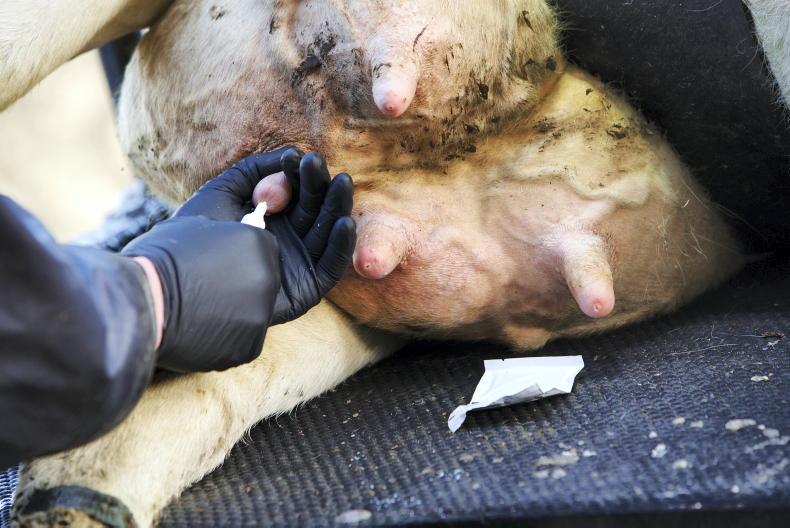
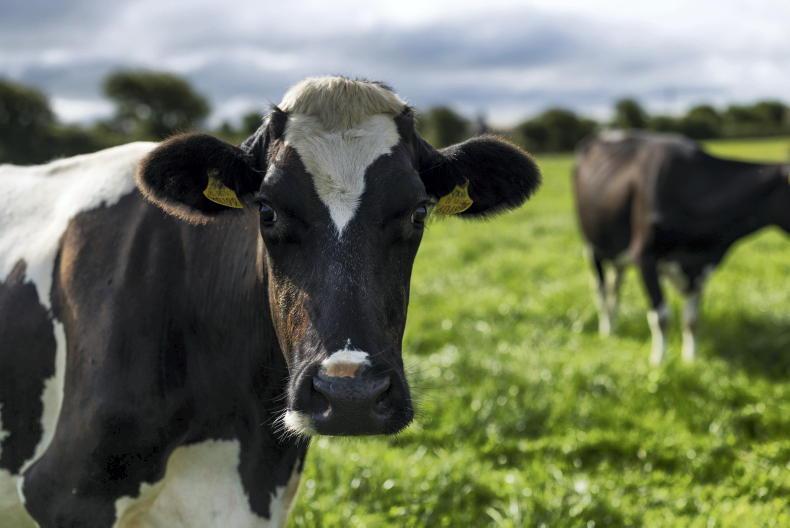
SHARING OPTIONS